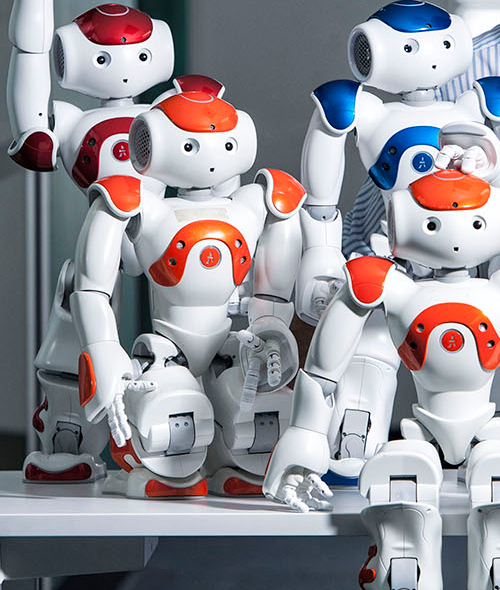Robo-lessons ease path to human lives
 A world in which humans share their homes and workplaces with robots is coming, and local researchers are looking to smooth the transition.
A world in which humans share their homes and workplaces with robots is coming, and local researchers are looking to smooth the transition.
QUT roboticists are working with a fleet of NAO (pronounced 'now') robots - pint-sized androids that are helping to pioneer a new method of programming machines in which any person can speak commands that a robot can understand and act upon.
It is known as ‘natural language programming’, and QUT roboticist Professor Jonathan Roberts believes it is key to bringing robots into everyone's world.
“Currently, to program a robot you need to be proficient in computer languages - coding,” said Professor Roberts, from the Australian Centre for Robotic Vision.
“That kind of system limits who can direct a robot, and therefore to what uses that robot can be put.
“If we want our robots to truly help us in the home and workplace then all of us will require the ability to instruct them.
“Just as the Jetson family could tell their robot housekeeper what to do, natural language programming will allow anyone to instruct a robot to do almost anything just by speaking to them.”
QUT is participating in the newly funded Innovative Manufacturing Cooperative Research Centre. One of its research programs will focus on the applications of robotics in manufacturing industries and workplaces.

According to Professor Roberts, natural language programming will pave the way for robots in work environments with humans and where the tasks are constantly changing.
“The simpler and less technical the programming process, the more valuable those robots will be to employers and human co-workers,” Professor Roberts said.
“The combination of natural language programming and robotic vision - using cameras to see and interpret the world as we do - is really the holy grail of an effective robotic workforce.”
Leading technology companies like Google, Amazon and Boeing are already pouring billions of dollars into their robotics divisions.
Professor Roberts said having workplaces in which humans can easily instruct their robotic colleagues would likely change the nature of the work humans undertake.
In a curious role-reversal, the Naos are already recruiting a future human workforce, which may itself recruit more robots.
“Our Naos are pivotal to the ACRV's high school outreach program to encourage high school students to consider a degree in robotics,” Professor Roberts said.
“The robotics revolution is going to spawn whole new industries and careers we haven't even dreamed of yet.
“The world will need millions of highly-skilled humans to design, develop, direct and maintain our robotic co-workers.
“Our Naos are a key STEM education tool to get that future workforce comfortable working with robots, programming robots, inspired by robots.”








 Print
Print